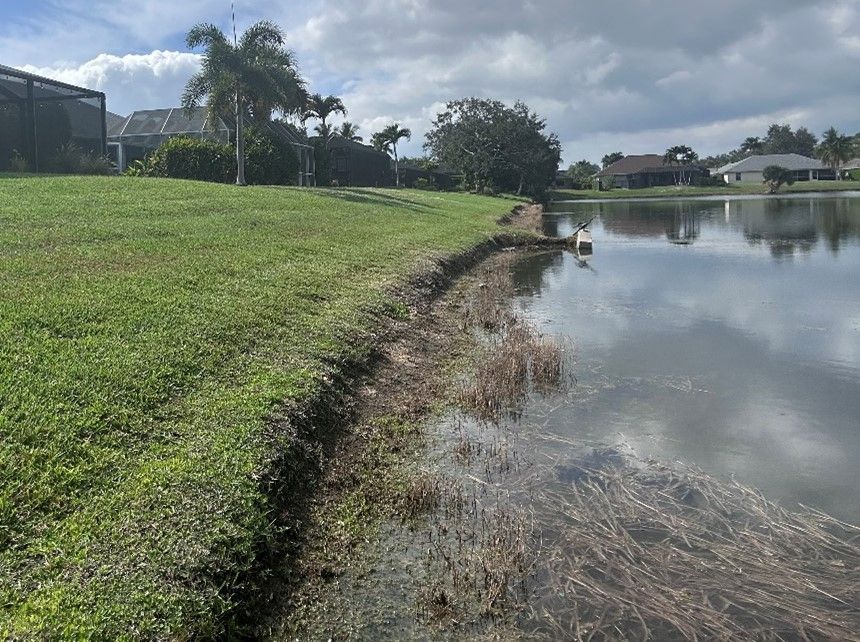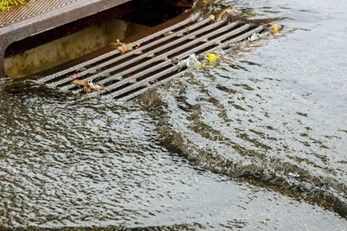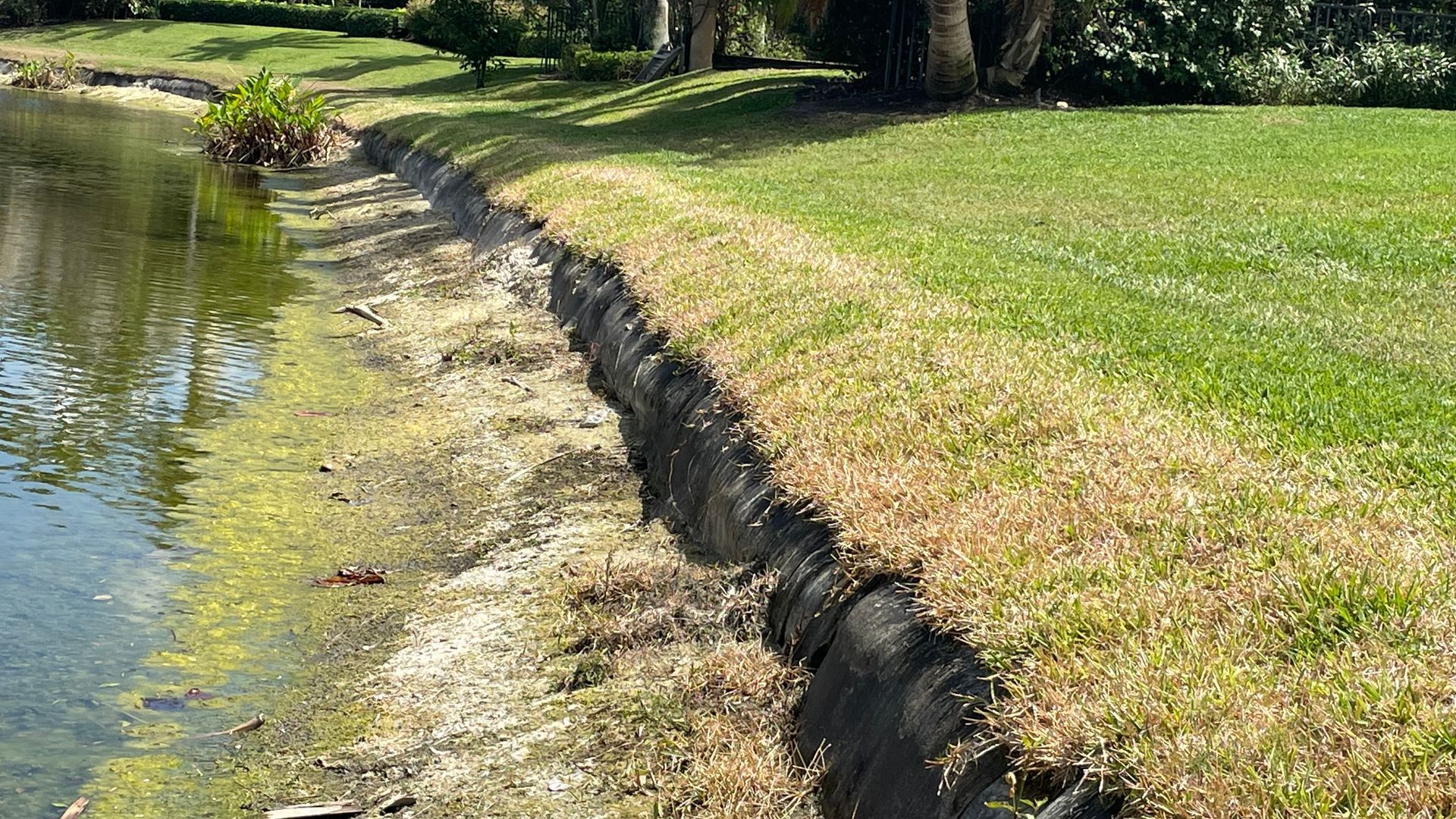Erosion Control - Why It’s Important

Erosion occurs when a material or aggregate is moved from a high to a low position due to the effects of water, wind, or other forces- whether natural or man-made. Erosion Control (aka Shoreline Stabilization) must be implemented on the shoreline of all bodies of water in the United States with effective, environmentally-friendly, and long-term solutions. The three primary Types of Lake, Pond, and River Erosion are Sheet Flow Erosion, Rill Erosion, and Splash Erosion. But erosion can also occur on horizontal areas such as landscaping, ditches, swales, berms, walls, and structures.
The various
Dangers of Lake and Pond Erosion include Safety Concerns, Land and Property Loss, Liability, Non-compliance Issues, Structural Damage, and Detriments to Lake Health. Erosion is pernicious, so it is often overlooked and not addressed in time. That is why it is very important to control erosion before too much land loss occurs. Unfortunately, many homeowners, business owners, and residential communities are stuck with a repair cost because not enough was done when the property was first developed to anticipate future erosion. Erosion is different in every state and in every climate- so many factors come into play when creating an erosion control plan, including
Soil Composition,
Water Velocity,
Water Volume,
Hydrogeology,
Hydroecology, and surrounding properties,
Wetlands, and Preserves.

Current Building Codes for Developers specify different Requirements When Digging Lakes. Here’s how it works- a developer secures funding and a site, then hires a civil engineer to come up with a set of plans and apply for a Development Order. This development order outlines how the community is to be built. It contains numbers and specifications for the lakes and their sizes and volumes. This is part of the overall Stormwater Management System. This system includes Lakes with Specific Volumes, Maintenance Plans, Reporting Criteria, cleaning the system through Confined Space Diving, monitoring Irrigation Pump State Repairs, keeping up with, Stormwater Structure Inspection and Repairs, Underwater Diving Services when needed to inspect pipes, and Main Line Injections when pipes need to be cleared.
In order to stay in Compliance and maintain the health and safety of a community, it is vital to keep up with the shoreline erosion and stormwater management system. If there is a lapse, they may receive Complaints from Residents, receive Non-Compliance Letters from the Water Management District (a state-run agency) Code Violations from the city or county, and possible Fines. In most residential properties that are not in a master planned community or part of an HOA, it is the Resident’s Responsibility to maintain their shoreline. In most planned communities, gated communities, and communities with Home Owners’ Associations, it is the HOA’s Responsibility to prevent erosion and maintain the stormwater management system.
All erosion control systems work in conjunction with a healthy Littoral Shelf, Native Sod, Wetland Buffers, and Preserves. If any of these become compromised by Exotic Weeds, improper Lake Maintenance, or disruption from wildlife or storms, it may lead to poor Water Quality, Discharge into the Ocean or Gulf, a decrease in beneficial Flora and Fauna, and unsightly communities.
Recent Posts






